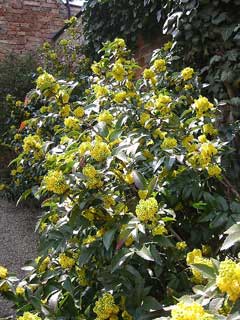
Oregon Grape, Cascade barberry
Latin Name: Mahonia nervosa
USDA Hardiness: 5-9
Native Range: NORTHERN AMERICA: Canada (British Columbia (southwest)), United States (Idaho (north), Oregon (west), Washington (west), California (northwest))
Edibility Rating: 3 / 5
Medicinal Rating: 2 / 5
Region:
Family:
Plant Type:
Medicinal Uses
Edible Uses
Edible Parts: Fruit Leaves | Edible Uses: Fruit - raw or cooked[2, 3, 101]. An acid flavour but it is rather nice raw, especially when added to muesli or porridge[K]. Unfortunately, there is relatively little flesh and a lot of seeds[K]. Too acid for most tastes but they are very good in jams, jellies, pies etc[183]. They can also be used to enhance the flavour of bland fruits or made into a refreshing lemon-flavoured drink[183]. The fruit is about 8mm in diameter[200]. Young tender leaves - cooked. Simmered in a small amount of water and eaten as a snack[183].
Cultivation
An easily grown plant, it thrives in any good garden soil[11, 200] but also succeeds in poor dry ones. Another report says that it is best on a lime-free soil[182]. Grows well in heavy clay soils. Prefers a sunny position[3] but succeeds in heavy woodland shade[K]. Hybridizes freely with other members of this genus. Plants are growing and fruiting well at Wakehurst Place in Sussex, but they do not generally do well in Britain[11]. Resistant to honey fungus[88]. The berries are typically harvested in late summer to early autumn when they are fully ripe. Mahonia flowers in late winter to early spring producing clusters of yellow flowers. Mahonia species are moderate to fast growers, typically reaching maturity in about 2 to 3 years, depending on the specific species and growing conditions.
Known Hazards
None known
Habitats
Light dry woods and rocky ledges[60, 67].
